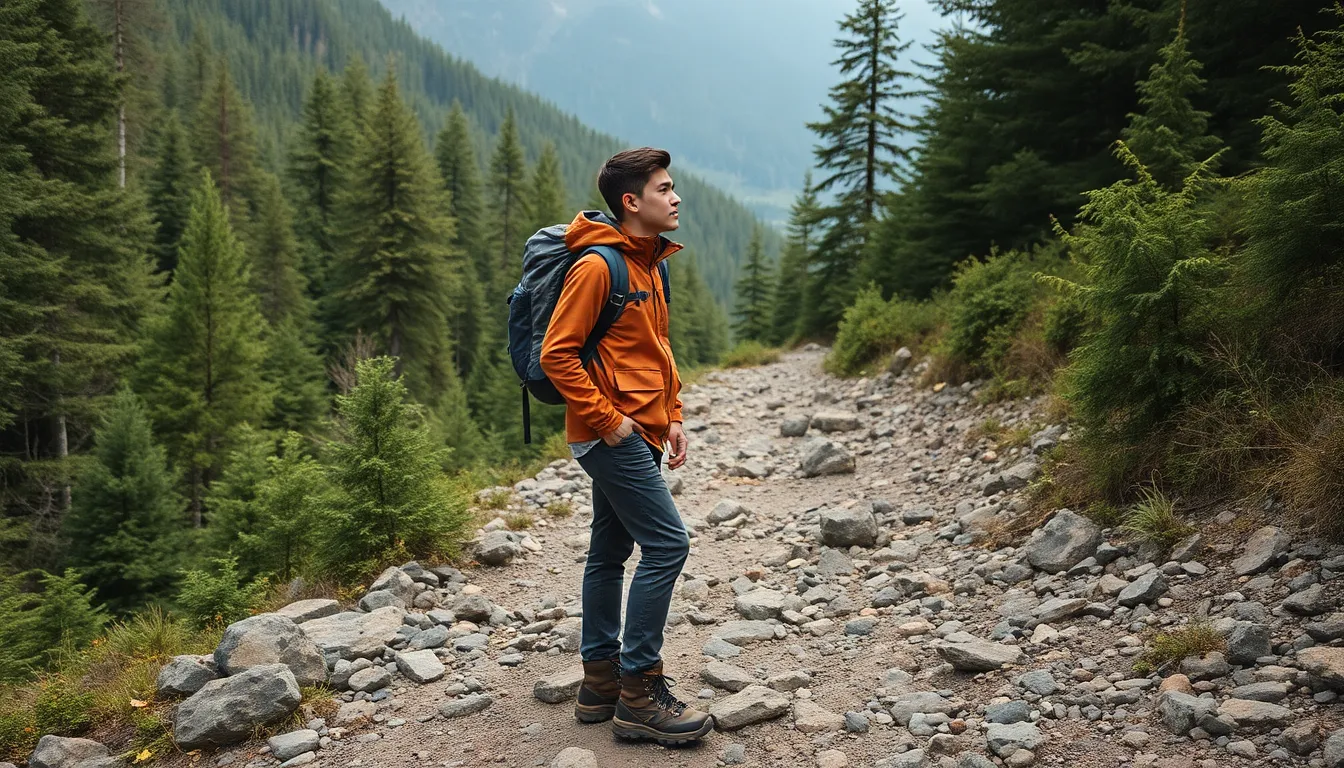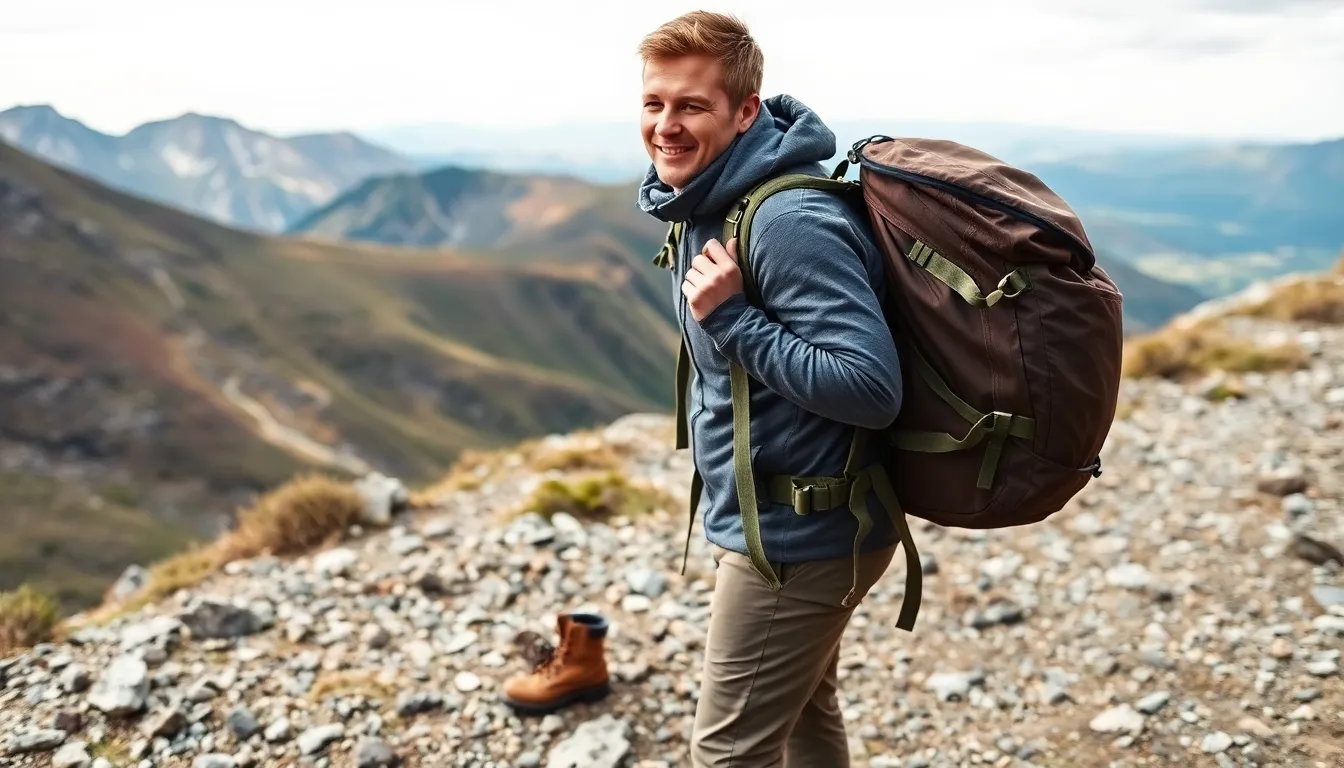When it comes to hiking, the right gear can mean the difference between a blissful day in nature and a comedy of errors worthy of a sitcom. Imagine tripping over your own shoelaces while trying to take a scenic selfie—it’s not just embarrassing; it’s downright dangerous! Proper hiking gear is essential for keeping adventurers safe and comfortable on the trails.
Table of Contents
ToggleImportance Of Quality Hiking Gear
Quality hiking gear significantly enhances the outdoor experience. Reliable equipment protects hikers from various weather conditions. A well-fitted backpack distributes weight evenly, reducing strain on the back. Durable footwear provides traction and support, minimizing the risk of slips and injuries. Invest in moisture-wicking clothing to maintain comfort during strenuous activities.
Functional gear contributes to safety, allowing for better navigation of trails. Lightweight camping gear aids in mobility and reduces fatigue. Proper hydration systems ensure consistent water intake, preventing dehydration. When hikers select gear designed for specific environments, they enhance their preparedness and adaptability.
Quality gear can also save money in the long run. For instance, replacing cheap gear frequently adds up over time. High-quality items typically feature better warranties and longer lifespans. Investing in reliable products leads to overall satisfaction during outdoor adventures.
Hikers should consider the gear’s weight and functionality. Lightweight tents offer portability without compromising durability. Practical tools like multi-tools and first-aid kits prepare hikers for various situations. Comprehensive checklists guide hikers in packing essentials and ensuring they’re equipped for their journey.
Prioritizing quality in hiking gear sets the stage for enjoyable and successful excursions. The right equipment leads to enhanced comfort, safety, and performance during hikes. Thus, hikers must carefully evaluate gear options before committing to purchases, ensuring they invest wisely in their adventures.
Essential Hiking Gear


Hiking gear plays a crucial role in ensuring a safe and enjoyable outing. Choosing the right equipment enhances comfort and protects against the elements.
Footwear
Footwear serves as the foundation for any hiking adventure. Proper hiking boots or shoes provide necessary support and grip for various terrains. Look for options with waterproof materials to keep feet dry during wet conditions. Insulated footwear benefits hikers in colder climates, while breathable designs suit warmer trails. A secure fit prevents blisters and enhances stability. Consider investing in high-quality socks to further enhance comfort and wick away moisture.
Clothing
Clothing must prioritize functionality and comfort. Layering is essential for adapting to changing weather conditions. Start with moisture-wicking base layers to keep skin dry, followed by insulating mid-layers for warmth. Outer layers should be waterproof to shield against rain and wind. Avoid cotton, as it retains moisture and contributes to discomfort. Also, pack a hat and gloves for colder hikes, while sun protection gear like hats and sunglasses is vital under direct sunlight.
Backpacks
Backpacks play a pivotal role in carrying essential items. Selecting a well-fitted pack makes a significant difference during hikes. Look for adjustable straps for a personalized fit, which distributes weight evenly. Consider the pack’s size based on trip length; smaller packs suffice for day hikes, while larger ones accommodate multi-day excursions. Internal compartments help organize gear efficiently, while hydration reservoirs or pockets for water bottles foster easy access to hydration. Quality materials enhance durability and performance in various weather conditions.
Optional Hiking Accessories
Optional accessories can enhance the hiking experience, providing additional support and safety.
Navigation Tools
Navigation tools ensure hikers stay on track and find their way efficiently. A reliable GPS device or smartphone app offers convenient mapping options. Topographic maps help understand terrain elevation and landscape features. Compasses provide a traditional backup for those who prefer analog methods. Additionally, portable power banks ensure devices stay charged throughout the hike, reducing the likelihood of navigation failures.
Hydration Systems
Hydration systems are vital for maintaining energy and performance on the trail. Hydration packs allow easy access to water without stopping frequently. Water bottles should fit securely in backpack pockets, allowing quick sips when needed. Some hikers prefer filtration systems for accessing fresh water from streams safely. Keeping hydrated enhances stamina and reduces the risk of fatigue during long hikes.
First Aid Kits
First aid kits provide essential support for minor injuries on the trail. Each kit should contain adhesive bandages, antiseptic wipes, and pain relievers for quick treatment. Gauze pads and medical tape are helpful for larger wounds. Including a whistle can aid in signaling for help if needed. Carrying a first aid kit boosts confidence and preparedness for unexpected situations during outdoor adventures.
Tips For Choosing The Right Hiking Gear
Selecting the right hiking gear ensures a comfortable and safe outdoor experience. Evaluating personal needs and preferences guides decision-making effectively.
Consider Your Hiking Style
Understanding personal hiking style proves essential. Day hikers often prioritize lightweight gear, while backpackers may require durable and multifunctional items. Those exploring rugged terrains need footwear with superior grip and support. Casual hikers might opt for breathable clothing that adapts to different weather conditions. Identifying anticipated trail lengths also influences gear choices. Adaptability often becomes crucial, especially when selecting layers for changing climates. Each hiking experience can dictate various gear requirements, emphasizing the need for thoughtful consideration.
Budget Considerations
Establishing a budget plays a significant role in gear selection. Quality hiking equipment often comes with a higher price tag but delivers longevity and performance. Well-made gear can withstand harsh conditions, reducing the need for replacements. Assessing the balance between cost and durability helps in making informed choices. Researching brands and comparing features can provide insight into the best options available. Discounted items and seasonal sales may offer considerable value. Investing strategically enhances both the hiking experience and financial satisfaction in the long term.




